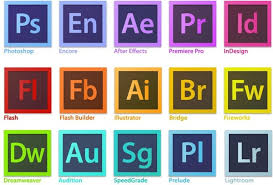In the digital era, web design and development demand powerful yet cost-effective tools for graphics work. Free and open-source software (FOSS) provides an excellent alternative to proprietary solutions, enabling professionals to create high-quality visuals without financial barriers. This white paper explores leading FOSS and commercial tools for graphics, their use cases, and their impact on web development, including eCommerce solutions.
White Paper: Free & Open-Source Software for Graphics Work in Web Design/Development
1. Introduction
In the digital era, web design and development demand powerful yet cost-effective tools for graphics work. Free and open-source software (FOSS) provides an excellent alternative to proprietary solutions, enabling professionals to create high-quality visuals without financial barriers. This white paper explores leading FOSS and commercial tools for graphics, their use cases, and their impact on web development, including eCommerce solutions.
2. Categories of Open-Source and Commercial Graphics Software
2.1 Image Editing & Graphic Design
GIMP (GNU Image Manipulation Program) (FOSS)
- Features: Advanced photo editing, layers, filters, and plugin support.
- Use Case: Web developers and designers use GIMP for raster graphics editing, image optimization, and content creation.
- Example: A freelance designer uses GIMP to edit website banners and social media images, ensuring a professional look without costly software licenses.
Adobe Photoshop (Commercial)
- Features: Industry-leading photo editing, AI-powered tools, and cloud integration.
- Use Case: Professionals use Photoshop for high-end graphics, eCommerce product images, and detailed photo retouching.
- Example: An online fashion store edits high-resolution product images for their eCommerce site using Photoshop.
Krita (FOSS)
- Features: Digital painting, illustration, and comic creation tools.
- Use Case: Artists and UI designers create high-quality web assets such as icons and illustrations.
- Example: A gaming website integrates Krita-generated assets for an immersive visual experience.
2.2 Vector Graphics & Illustration
Inkscape (FOSS)
- Features: Scalable vector graphics (SVG) editing, path manipulation, and multi-format exports.
- Use Case: Ideal for creating logos, icons, and infographics.
- Example: A startup designs its branding assets, including a logo and UI elements, using Inkscape.
Adobe Illustrator (Commercial)
- Features: Industry-standard vector graphics tool with precision design tools and cloud storage.
- Use Case: Professionals create complex vector graphics, branding elements, and marketing materials.
- Example: A high-end eCommerce brand develops a logo and promotional materials using Illustrator.
Penpot (FOSS)
- Features: UI/UX design, real-time collaboration, and SVG-based workflows.
- Use Case: Teams create wireframes and interactive prototypes.
- Example: A remote development team designs a mobile-first website prototype collaboratively using Penpot.
2.3 UI/UX & Web Design
Lunacy (FOSS)
- Features: AI-powered tools, offline mode, and .sketch file compatibility.
- Use Case: Web designers create UI kits and rapid prototypes.
- Example: A web agency migrates from proprietary design tools to Lunacy for cost reduction and offline accessibility.
Figma (Commercial)
- Features: Cloud-based design tool, real-time collaboration, and extensive plugins.
- Use Case: UX/UI teams create responsive designs and prototypes.
- Example: A team of designers uses Figma to create an eCommerce website layout collaboratively.
openElement (FOSS)
- Features: Drag-and-drop editor, SEO management, and responsive design tools.
- Use Case: Small businesses develop websites with an integrated design and coding approach.
- Example: A freelancer builds a portfolio site with openElement, optimizing it for search engines.
2.4 Desktop Publishing & Layout
Scribus (FOSS)
- Features: Professional page layout, PDF export, and CMYK support.
- Use Case: Used for creating brochures, eBooks, and marketing materials.
- Example: A web design firm creates digital brochures for a client’s marketing campaign.
Adobe InDesign (Commercial)
- Features: Industry-standard layout and publishing software.
- Use Case: Businesses use it for eBooks, catalogs, and high-end marketing materials.
- Example: An eCommerce brand designs a digital product catalog using InDesign.
2.5 Web Development & Prototyping
Brackets (Deprecated, consider Visual Studio Code or Geany as alternatives) (FOSS)
- Features: Live preview, preprocessor support, and extensions.
- Use Case: Front-end developers use it for real-time CSS/HTML editing.
- Example: A startup’s web team prototypes a landing page using Brackets.
Adobe Dreamweaver (Commercial)
- Features: Visual development, coding assistance, and real-time previews.
- Use Case: Web designers build interactive, responsive websites.
- Example: An eCommerce store is developed using Dreamweaver’s design and coding capabilities.
3. eCommerce Integration & Design Tools
3.1 Open-Source eCommerce Solutions
- WooCommerce (WordPress Plugin, FOSS) – Ideal for small businesses building an online store.
- Magento Open Source (FOSS) – Feature-rich eCommerce platform for scalable business growth.
- PrestaShop (FOSS) – Customizable eCommerce solution with a large module ecosystem.
3.2 Commercial eCommerce Solutions
- Shopify (Commercial) – Hosted platform with an intuitive design interface and integrated payment solutions.
- BigCommerce (Commercial) – Scalable cloud-based eCommerce software with powerful design tools.
4. Key Benefits of Open-Source and Commercial Software
- Cost Efficiency: Open-source tools provide no-cost solutions, while commercial tools offer premium features for professionals.
- Community & Support: Open-source tools rely on community-driven updates, while commercial tools provide dedicated support.
- Customization & Scalability: Open-source software allows for customization, whereas commercial tools offer enterprise-grade solutions.
5. Challenges and Considerations
- Learning Curve: Some tools require time for proficiency (e.g., GIMP vs. Photoshop).
- Compatibility Issues: Certain file formats may have limited support in open-source tools.
- Project Maintenance: Some open-source tools may lack long-term updates.
- Cost of Commercial Software: High licensing costs for Adobe Suite, Shopify, and other proprietary solutions.
6. Conclusion
Free and open-source software empowers web designers and developers to create high-quality visuals without relying on expensive proprietary tools. However, commercial software solutions provide advanced capabilities and enterprise support for large-scale projects. By leveraging a mix of tools like GIMP, Inkscape, Photoshop, and Shopify, professionals can build visually compelling, high-performance websites tailored to different business needs.
7. References
- GoodFirms: Best Free Open Source Web Design Software
- Geekflare: Top Open-Source Designer Tools
- CyberLink: Free Graphic Design Software
- WebFX: 30 Useful Open Source Apps for Web Designers
